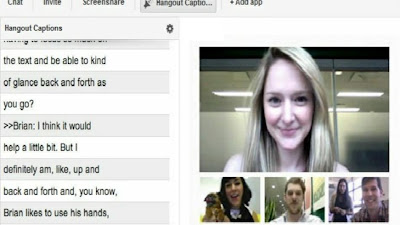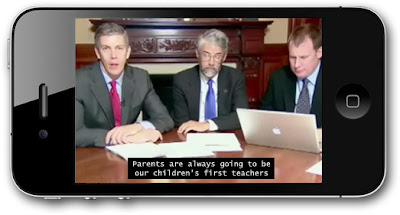What is Captioning?
When you see a TV video or a movie, sometimes you might have seen text being displayed at the bottom. This text is called as captions or subtitles. Captioning is converting the spoken voice into text and displaying it in a synchronized manner with the voice. The transcription of digital files is done by a professional transcriber.Types of Captions:
They are of 2 types – Open captions and closed captions.What is Closed Captioning?
In closed captions, the text that is displayed at the bottom of the television can be disabled or enabled. Hence the name ‘Closed’. Subtitles displayed at the bottom of the TV screens are an example of CC. In order to display the text, a decoder is required. The text is usually separate from the original video file. Closed captioning abbreviated as CC compared to Open Captions(OC) have become more popular today owing to its benefits. Companies such as Google for its video delivery network use CC. Recently they announced expanded the CC service into Google plus where users who hangout at Google+ will be able to have transcript of the spoken audio. Hulu another video CDN gives users the options to search captions. Federal Communications Commission (FCC) has mandated the requirement of CC as part of digital television.Who uses Closed Captioning? Some of the users of CC are:
- Digital Video Content Delivery Networks such as Youtube, Hulu etc.
- TV Broadcast stations
- Radio Shows.
- Video documentary makers
- Podcast
- Classrooms
- Translation companies
- Language coaches
What is Open Captioning?
In CC, the watcher or listener has the option to disable or enable the subtitle from being displayed on the screen. In an OC, there is no such options. It will always in display mode always. There are many benefits of open captions. One is, watching TV at noisy places such as airports, stations, waiting rooms and even at quieter places such as hospitals. Due to the noise levels, its hard to hear what the speakers are speaking. Hence with the help of OC one can listen to TV news or shows. Also, for activating a CC one may have to request the operator to enable captions, which is difficult for people watching video in public. An always ON Caption, there is no such need to ask to switch on the subtitles.
With the advantages discussed above, OC has
its disadvantages. For some people it might be a source of distraction and it
can become a nuisance when disabling the rotating text is not possible.
9 Benefits of Captioning:
- Watch Videos silently by reading CC.
- Anyone hard of hearing can watch a movie with the help of captions.
- Watch videos in other languages using subtitles.
- Captions help in SEO.
- Archive CC into word transcripts citations and reference.
- Display CC as Transcript just below the video.
- Captions can be incorporated in Podcast in the form of transcripts..
- CC help where the audio clarity is poor.
- Helps in understanding heavy accent jargons and technical names.
Who Uses Open Captioning?
OC was popular at one time, however with the rise of digital networks such as Youtube,Hulu, Netflix and Vimeo, producers and media communication companies use CC most of the times. The earlier applications of OC were seen TV shows, foreign language movies such as Spanish,French films,VHS tapes etc.Basic Steps of Captioning:
There are 4 basic steps for displaying a subtitle starting with-
Step 1 is Transcription:
Is the process of typing the spoken speech into text. The spoken audio or video is transcribed word for word by hand by professionals called transcriptionists. The draft or rough version of the transcript is prepared and then send to proofreading.
Is the process of typing the spoken speech into text. The spoken audio or video is transcribed word for word by hand by professionals called transcriptionists. The draft or rough version of the transcript is prepared and then send to proofreading.
Step 2 of Proofreading:
Is the process of checking the document for any errors in grammar, spellings, formatting, spacing and correcting it. Proofreading a document usually takes around 15% of the original time taken to transcribe the file. Its best to get the file proofread and checked for errors by someone other than the first transcriber. This yields higher accuracy rate. Once it’s done, the process of timecoding begins.
Is the process of checking the document for any errors in grammar, spellings, formatting, spacing and correcting it. Proofreading a document usually takes around 15% of the original time taken to transcribe the file. Its best to get the file proofread and checked for errors by someone other than the first transcriber. This yields higher accuracy rate. Once it’s done, the process of timecoding begins.
Step 3 is Timecoding:
Each frame of video is identified in minutes,hours and seconds. A time code looks something like this- 01:08:33 which is HH:MM:SS (Hours:Minutes:Seconds)
Each frame of video is identified in minutes,hours and seconds. A time code looks something like this- 01:08:33 which is HH:MM:SS (Hours:Minutes:Seconds)
In the process of timecoding, each speech by the speakers (however
long or short it may be) is denoted by the start and stop of that particular
speech. For example:
1
00:00:01,00 --> 00:00:08,90
Hi Daniele,Nice to hear your voice.
2
00:00:9,10 --> 00:00:11,90
Hey John, Thank you! How has your health been?
These codes are prepared for the entire
duration for of the digital file and then complied in a word or notepad
document.
Step 4 of Software coding: The above documents can then be loaded into a Subtitling software
such as Swift TX or DVD Studio pro and then installed.
How much does it cost?
Rates for subtitling are charged
according to the lend of the audio or video. Since the process involves
transcribing the digital file, proofreading it , timing it according to the
speech and then coding using a suitable software, the cost can run in hundreds
of dollars. Rates start at US$ 3per
minute and can go as high as 5 dollars. Transcribing a 60 minute documentary will cost
somewhere around 180 dollars if charged at US$3/Min.
For foreign language captioning work such
as Spanish translation or Mandarin Captioning, the digital speech will need to
be translated first, then transcribed into English language following which it
will be coded. Translating results in extra costs or around US2$/Minute. Some popular types of non-english language
translations are:
- Spanish translation
- German translation
- Mandarin translation
- French Translation
- Arabic translation
- Hindi translation
- Urdu Translation
- Cantonese translation
Youtube CC:
Accurate or not? YouTube transcribes and displayed the subtitles of videos using its proprietary algorithm. Though the softwares are technically sound, many times its seen that YouTube captions may not be accurate. Accuracy is highly dependent on the audibility and accent of the speaker. Since the launch of the CC service a few years ago, the software is able to understand more and more difficult words. Its expected that as times passes, the software’s capability will mature.
Users have the option to upload captions
into Youtube. In order to do this, one needs to type the speech in notepad in
number the lines. Then insert the corresponding time codes. The resultant text
in notepad will look something like this:
1
00:00:01,00 --> 00:00:08,90
Hi, What did you learn today?
2
00:00:9,10 --> 00:00:11,90
Here is a simple guide on..
5 Potential Application of Closed Captioning
- People with hearing problem: CC’s are very usefully for people suffering from hearing problems. People can go and study in a classroom or watch entertainment shows without increasing the volume. For deaf people, it’s a boon and as very useful tool.
- Ipads and Smartphones: Ipad gives its users to enable CC so that people watching a video in silence zone or those who have difficulty in hearing can read the text. However, Captions are available for videos that come with a .Srt file. Similarly, one can use the same features in Android based tablets and smartphones.
- Skype and Video Messengers: Skype, a popular tool for VOIP can use captions for those require. Skype has a major user base of professionals conducting telephonic calls and video chats for business meetings. These meetings can be transcribed, set up with a caption and then be used for further usage.
- Language learning Classrooms: Classroom teaching language courses can utilize captioning to a better extent. Videos and guided teaching using digital videos can be done using projectors containing subtitles. This can make learning easy and fun. Learners with English as Second language (ESL) find such methods of learning easier compared to traditional green-board teaching. Also, since digital videos and audio courses are portable in the form of CD/DVD’s, students can carry on their learning outside of classrooms. If needed, academicians and students can transcribe courses and include it as subtitles for the benefit of the classroom. The recent blog post guiding academicians on transcription discusses this.
- Digital Marketing and SEO: In our recent blog post, we discussed methods for Podcast SEO. One such tip was to transcribe all podcast and incorporate the transcript on the same page. Many SEO professionals and digital marketing agencies still overlook this method of promotion. Most videos or podcasts that feature on a website do not come with a transcript. One benefits of having the video transcribed and putting the transcript on the same page is that it helps in quality SEO. Also, the transcribed version of the file can be converted into subtitles which can benefit viewers and podcast listeners. Podcast transcription and video transcription is highly recommended for SEO professionals.






I like this post.
ReplyDelete